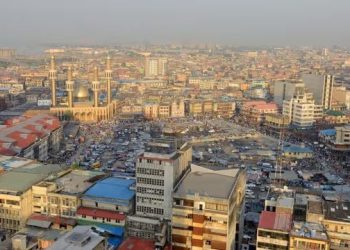Beyond the beautiful landscapes, there are amazing African libraries that can be referred to as a work of art and a place of knowledge.
Along with its diverse culture that has over a thousand, five hundred languages and over eighteen per cent of the world’s population, Africa houses some of the most popular libraries visited by tourists from around the world.
These libraries are a treasure trove of stories, history, and a collection of books that talk about the culture, historical background and heritage of Africa.
In Africa, there’s a collection of libraries that you may want to visit. From Kenya to South Africa, Egypt to Ghana, and other parts of Africa, here are some of the most popular libraries.
These Are 5 African Libraries That Everyone Should Visit
FinTech Telex has carefully curated and put together a list of five African countries that stand out.
1. Kenyatta University Library, Kenya
Opened in 2023, Kenyatta University Library in Kenya is one of the newest African libraries. The modern structure with six stories feet subject each floor to a unique function.
The basement accommodates all acquisition and binding activities, while the ground floor features a student lounge and a check-out desk.
Moving upward, the second floor is dedicated to social science books, the third floor to humanities titles, and the fourth floor to science and technology materials.
Ascending further, the fifth floor is dedicated to special collections, showcasing unique and rare resources. Finally, the top floor is designed as a serene reading area, providing students and faculty with a conducive environment for academic pursuits and research.
Kenyatta is more modern than other libraries.
2. Saint Catherine’s Monastery Library, Egypt
The famous Eastern Orthodox Monastery of St. Catherine’s, majestically sited on Mt. Sinai, boasts a rich history dating back to the late sixth century AD.
Commissioned by the Byzantine Emperor Justinian I, the monastery stands as a testament to ancient Christian heritage, being constructed over the relics of the martyred Saint Catherine and the sacred site believed to be the biblical burning bush, as identified by St. Helena, mother of the Roman Emperor Constantine.
What truly sets St. Catherine’s Monastery apart is its esteemed library, considered the oldest continuously run library in existence today.
Its collection of religious and secular manuscripts is unparalleled, rivalling even the Vatican in sheer magnitude. From ancient Bibles to profound patristic works, liturgies, prayer books, and legal documents like deeds, court cases, and Fatwahs (legal opinions), the library houses a treasure trove of historical and theological knowledge.
The manuscripts, predominantly written in Greek, are also found in Syriac, Georgian, Coptic, Armenian, Arabic, Ottoman Turkish, Ethiopic, and Old Church Slavonic languages.
This linguistic diversity attests to the monastery’s significance as a hub of cultural exchange and scholarly pursuits across different civilizations.
In 1949, Kenneth W. Clark spearheaded a groundbreaking expedition to the Middle East under the auspices of the Library of Congress and its partners.
The mission aimed to preserve and document ancient manuscripts, including those at St. Catherine’s Monastery.
After careful evaluation of the monastery’s extensive collection of 3,300 manuscripts, 1,687 were selected for microfilming, ensuring the preservation and accessibility of this invaluable heritage for generations to come.
3. Al-Qarawiyyin Library, Morroco
The al-Qarawiyyin Library in Fez, Morocco, stands as a timeless testament to human knowledge, tracing its origins back to an illustrious past. Founded in 859 CE, this venerable institution holds the distinction of being the oldest continuously operating library globally.
Its rich history is intertwined with the legacy of Fatima Muhammad Al-Fihri Al-Quraysh, an esteemed figure whose vision and dedication gave birth to this intellectual haven.
In March 2016, the al-Qarawiyyin Library underwent a meticulous restoration process, breathing new life into its centuries-old architecture and preserving its cultural heritage for future generations.
The significance of this revitalization effort extends beyond mere refurbishment; it symbolizes a commitment to safeguarding the invaluable treasures of human knowledge housed within its walls.
There’s a café, administrative offices, a rare book collection, a manuscript restoration laboratory, a conference room, book stacks and a reading room in the library.
4. Balme Library, Ghana
Balme Library is one of the best African Libraries for research. Located in the University of Ghana, it houses about a hundred thousand volume microfilms, five hundred various electronic titles, and rare manuscripts. This includes Arabic books and a sizable African collection of books and primary source materials from countries throughout the continent.
5. Library Of Alexandria, Egypt
The Library of Alexandria stands as a renowned symbol of African intellectual heritage and knowledge preservation.
Nestled along the shores of Alexandria, this iconic library boasts an impressive capacity to house nearly eight million books, making it a treasure trove of human wisdom. Presently, the collection encompasses around one million books, with a significant portion, half to be precise, graciously donated by the National Library of France.
Within its hallowed halls, the Library of Alexandria proudly holds Africa’s most extensive compilation of French-language literature, contributing to its distinction as the world’s sixth-largest library. The diverse array of materials housed within spans languages, with a significant presence of works in Arabic and English complementing the French literature.
Moreover, the library is not merely a repository of books but a multifaceted cultural centre. Its facilities include a conference centre, providing a platform for intellectual discourse and collaboration.
Additionally, visitors can explore four museums showcasing rich historical artifacts, delve into 19 art galleries brimming with artistic expression, and witness the meticulous restoration of ancient manuscripts in a specialized facility.
Furthermore, the library boasts a multimedia collection, embracing modern technology to disseminate knowledge and engage audiences in innovative ways.










